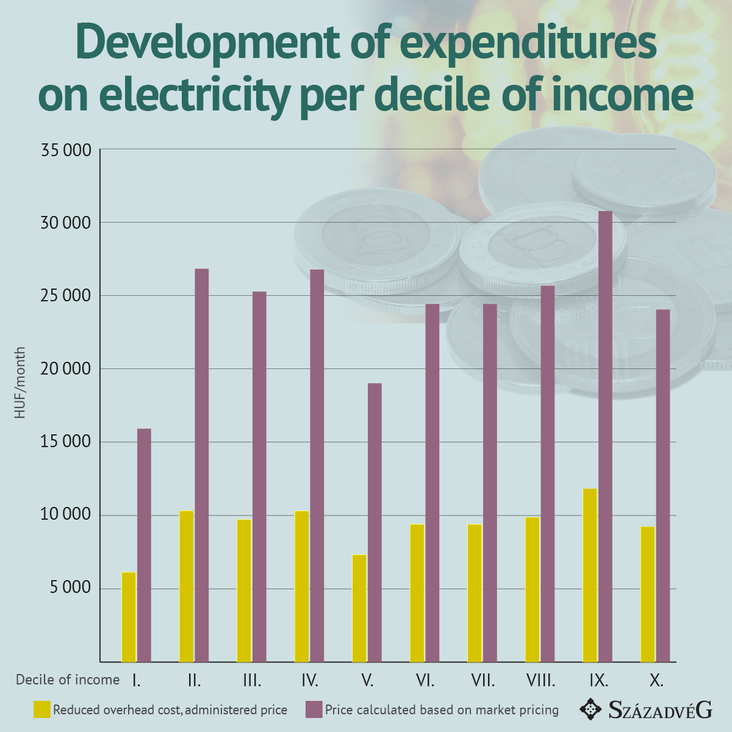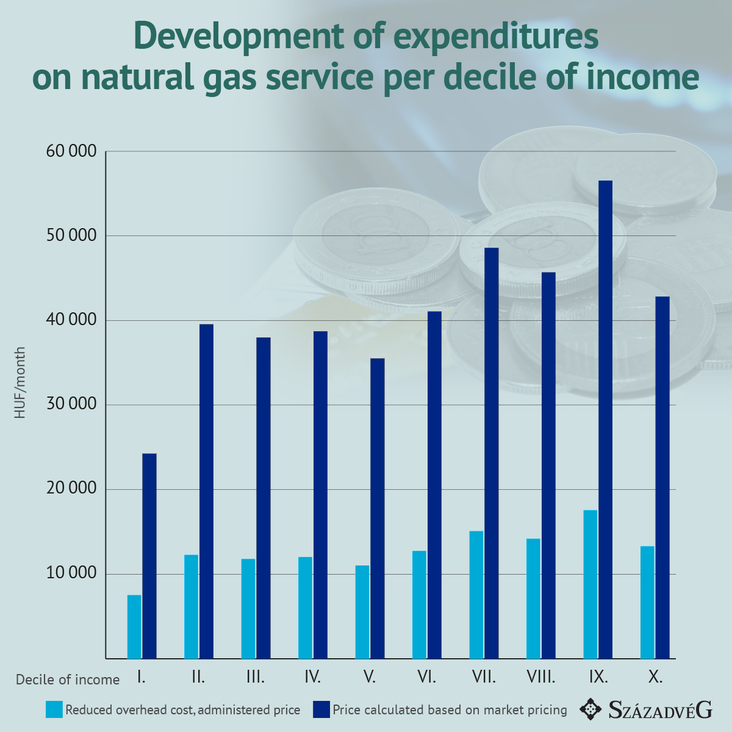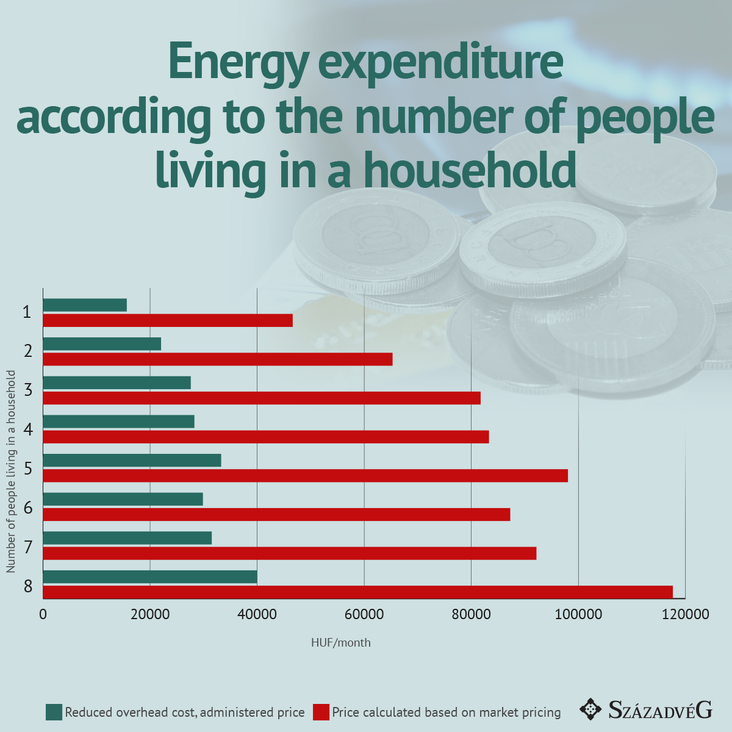In Hungary, household overhead charges have been administratively fixed, so, compared to other European countries, the increase in prices caused by the current energy crisis does not affect the natural gas and electricity tariffs in households: they are still the lowest in the European Union. Péter Márki-Zay, like previous left-wing governments, would abolish overhead cost reduction and introduce market prices instead of administered prices. The measure would increase the overhead costs of every Hungarian household but would hit low-income people and families particularly hard. The present analysis examines how much expenditure growth different households would have suffered in the previous month if service providers had calculated their tariffs based on market prices instead of administered prices.
How would Péter Márki-Zay’s policy on overheads affect the expenditures of Hungarian households?
Péter Márki-Zay would abolish overhead cost reduction and adjust household tariffs to market prices. The abolition of administered prices would increase the expenditures of all Hungarian families, but the rate of increase in costs would vary from household to household. Századvég estimated how market tariffs would have affected the electricity and gas bills of different household types in October.

The poorest would be hit the hardest by a price increase
According to the latest available data, a Hungarian household spends an average of HUF 9,000 per month (4 percent of its total expenditure) on electricity and HUF 13,000 (5 percent of its expenditure) on natural gas. As a result of the recent increase in energy prices, the introduction of market pricing would have increased the current tariffs 2.6 times for electricity and 3.2 times for natural gas in October, which would be an additional cost of almost HUF 44,000 for an average household consuming both products. Regarding the total monthly expenditure of households, the ratio of the amount spent on the two products would have increased from 9 percent to 26 percent.
Regarding natural gas services and electricity expenditure, the following two figures show the effect of price increase associated with the introduction of market prices, divided into ten equal categories based on the annual income of households. The first group indicates the lowest decile and the tenth the highest decile of income: the average monthly net income per capita in the households belonging to the first decile was HUF 41,205, and in the tenth it was HUF 314,168.


The figure shows that the criticism that overhead cost reduction protects the richest but does not help the poorest is false. An increase in energy tariffs would be a significant additional burden on all deciles of income. And while the increase in the case of both energy sources would be the biggest in the ninth decile, it would hit the members of the two lowest deciles the hardest based on the share of expenditure, where households currently spend 12 percent of their total expenditure on the two products. However, this ratio would raise to 35 percent as an effect of the price increase. The primary reason why the introduction of market prices would hit the wealthiest less (in the case of electricity, the increase would be the third lowest in the highest decile of income) is that the members of the category have energy-efficient equipment and typically live in smaller households, thus their energy consumption is also lower than in other deciles.
The introduction of market prices would significantly increase the burden on families
Household energy consumption is strongly affected by the number of people living in a household, so the price increase associated with the introduction of market prices would hit families the hardest. While in households where only one person lives, the total increase in expenditure regarding the two energy sources would have been HUF 31,000, families with eight people living in the same household could have paid more than HUF 77,000 more in October. With the price increase, the share of energy costs in the latter category would increase from the current 13 percent to 37 percent in their total expenditure.

The overhead cost reduction program and the administered price regulation ensuring it are therefore a particularly important safety net for low-income households and households with a family in Hungary. Hundreds of thousands of households would become energy poor by abolishing administered prices, leading to significant social tensions.
Data used and method applied
In order to determine the tariffs calculated on the basis of market prices, the item of „energy charge” included in the components of electricity and natural gas tariffs in households, which was published by Eurostat in the first half of 2021, was adjusted based on the average prices of the Hungarian Power Exchange and CEEGEX (Central Eastern European Gas Exchange) in October. With the introduction of new pricing – due to the increase in product fees – the rate of VAT could also change, but this was not taken into account. For the estimation, we assumed an exchange rate of HUF 359 to EUR 1 based on the average data of the Magyar Nemzeti Bank. The breakdown of household expenditure by income and living together was carried out on the basis of the latest available Household Budget and Living Conditions Survey of 2019 conducted by the Central Statistical Office.
